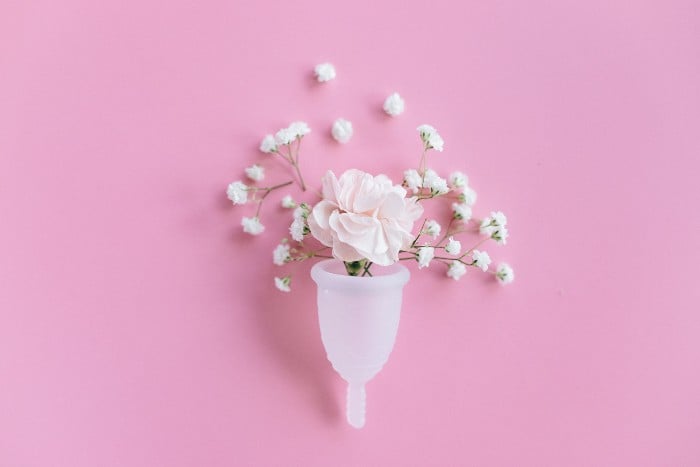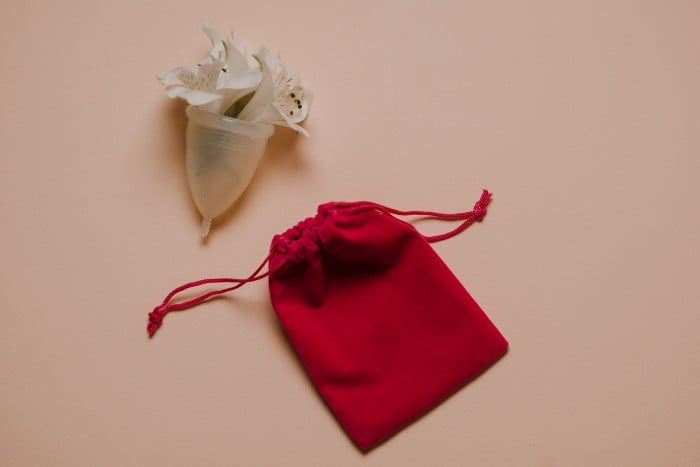You may be associating vaginal bleeding with your period, but it’s not unusual for women to at times bleed outside their menstrual cycle, as it may be associated with various reasons. One of the reasons for uncommon vaginal bleeding could be related to spotting during ovulation, and it can surely make you worried as you wonder if it’s normal or not.

In this article, we’ll discuss what ovulation is, the reasons for ovulation bleeding, when to be concerned, and more for your health and well-being.
What Is Ovulation?
Your ovaries contain eggs. When ovulating (or during ovulation), an egg is released from the ovaries and into a fallopian tube. This egg can become fertilized under the right conditions, usually within 24 hours.
Ovulation occurs in the middle of the menstrual cycle, and most women experience it once a month. For instance, if you have a 28-day cycle, ovulation occurs 14 days before the first day of your next period.
Most women can tell when they are ovulating with these common signs:
- Increase in basal body temperature
- Breast soreness
- Heightened senses
- Nausea and headaches
- Cervical mucus
- Mild pelvic or lower abdominal pain
- Light spotting or brown discharge
What Is Ovulation Bleeding?
As mentioned above, one of the symptoms that you’re ovulating is light spotting or brown discharge. Some women may experience this, and some may not.
When the follicle, in which the egg is surrounded and protected, matures and bursts open to release an egg, this can result in a small amount of bleeding. The ovulation discharge can range from red to dark brown.
As blood gets older, the discharge will be dark brown in color. Whereas the discharge could also be light pink in color as the blood gets mixed with cervical fluid.
All this leads to changes in hormone levels during ovulation – estrogen and progesterone, which cause bleeding. Before ovulation, estrogen levels rise with the growth of follicles. Once ovulation is completed, estrogen levels rapidly decline, and progesterone levels keep rising to prepare the endometrium for implantation.
Generally, ovulation bleeding is normal as it’s one of the symptoms that you’re ovulating and occurs only once each cycle. Ovulation bleeding is usually light, with just a few drops of blood on your underwear.
If spotting is combined with other ovulation symptoms, such as breast soreness and mild pelvic pain, it usually indicates that it’s normal spotting related to ovulation.
Spotting Between Periods
Light bleeding or spotting outside your period, such as before, after, and during ovulation, can occur as well. Let’s take a look.
Spotting Before Ovulation
If you’re spotting before ovulation, it may signal that you have a reproductive problem. If it’s happening one to two weeks apart, there may be no ovulation at all, especially when linked with other health concerns that affect fertility, like PCOS or thyroid issues.
Spotting During Ovulation
Ovulation spotting occurs when you’re ovulating. You can tell you’re spotting during ovulation when you experience other ovulating symptoms as well, like cervical mucus and mild lower abdominal pain.
This is usually normal and nothing to worry about. Women who want to get pregnant may use this as a sign to conceive since this is the time they are fertile.
Spotting After Ovulation
If you’re spotting after ovulation, it could be implantation bleeding. When a fertilized egg attaches to the wall of a woman’s uterus, it can cause light bleeding from a few hours to 2 days. Generally, it happens when your period had to arrive.
It usually indicates that you’re pregnant. You might also have very light cramping accompanied by light bleeding or spotting. Using a pregnancy test during this time will confirm your pregnancy.
If you experience heavy bleeding, clotting, and pelvic pain, visit your healthcare provider immediately. Some other causes of bleeding during early pregnancy can also be due to infection, miscarriage, or ectopic pregnancy.
On the other hand, you may also experience non-pregnancy-related vaginal bleeding after ovulation due to menstruation, endometriosis, hormonal changes due to birth control or fertility pills, infections, or uterine fibroids.
What’s the Difference Between Ovulation Bleeding and a Period?

The differences between ovulation bleeding and a period are mentioned below.
- The timing of bleeding – Ovulation bleeding usually occurs 13 to 20 days in your menstrual cycle. On the other hand, period may occur every 21 to 35 days in your cycle.
- The amount of bleeding – Ovulation bleeding consists of only mild spotting. Whereas, period bleeding is heavier and may cover your entire panty liner.
- The duration of bleeding – Your period may last up to 7 days. However, ovulation bleeding lasts between 1 and 2 days.
- Symptoms – The symptoms accompanied by period are abdominal cramping, fatigue, lower back pain, nausea, and diarrhea or constipation. These symptoms are unusual with ovulation bleeding.
Does Spotting During Ovulation Mean Pregnancy?
Spotting during ovulation doesn’t indicate your pregnancy. However, spotting during ovulation, accompanied by other symptoms of ovulation, can be a great sign for women that they are in the fertility window.
Whether they want to get pregnant or not, they can take appropriate measures accordingly when spotting during ovulation.
Keep in mind that the timings of ovulation bleeding and implantation bleeding (which is an early sign of pregnancy) are quite different. So, bleeding during ovulation doesn’t mean that you are pregnant. It just means that you have entered the fertility window.
How Can I Prevent Ovulation Bleeding?
The majority of women don’t experience ovulation bleeding. Even if you’re one of those who do experience this, the symptoms may only be mild and shouldn’t concern you.
However, women who want to prevent ovulation bleeding may be prescribed hormonal contraceptives that control the hormones responsible for ovulation bleeding and stop ovulation. Of course, you must consult your doctor about this.
If you want to conceive, you shouldn’t prevent ovulation or spotting related to it, as it’s a natural part of ovulation. You can always discuss with your doctor how you can manage spotting during ovulation better once they have clarified that your spotting is nothing to worry about.
When to See Your Healthcare Provider
If you have irregular bleeding outside your period, it could be a sign of fibroids, STIs, endometriosis, and PCOS. Irregular bleeding with severe pelvic pain and heavy blood flow requires you to see your healthcare provider immediately.
If your menstrual bleeding patterns have altered all of a sudden, you should also contact your healthcare provider, so they can take the right step at the right time before your health is risked.


